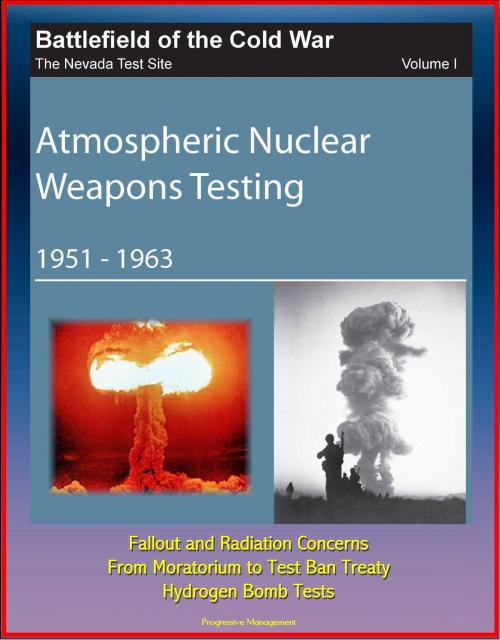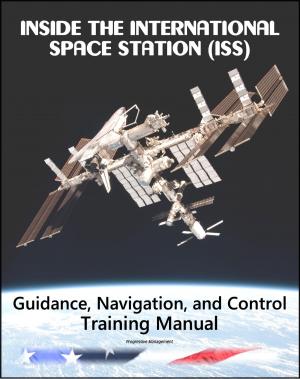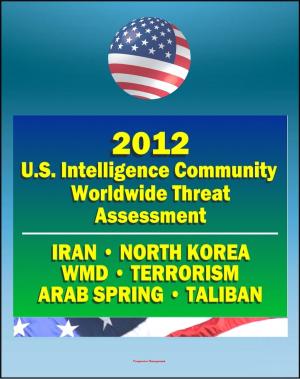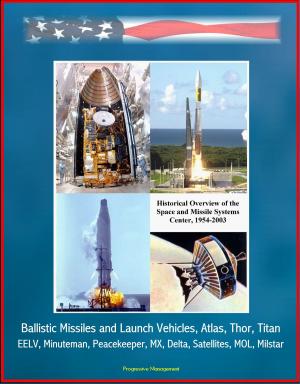Battlefield of the Cold War: The Nevada Test Site, Volume I, Atmospheric Nuclear Weapons Testing 1951 -1963, Fallout and Radiation Concerns, From Moratorium to Test Ban Treaty, Hydrogen Bomb Tests
Nonfiction, History, Military, Nuclear Warfare| Author: | Progressive Management | ISBN: | 9781301448623 |
| Publisher: | Progressive Management | Publication: | April 5, 2013 |
| Imprint: | Smashwords Edition | Language: | English |
| Author: | Progressive Management |
| ISBN: | 9781301448623 |
| Publisher: | Progressive Management |
| Publication: | April 5, 2013 |
| Imprint: | Smashwords Edition |
| Language: | English |
This is a comprehensive history of an important chapter in the history of the Cold War, American atmospheric atomic tests at the Nevada Test Site and elsewhere, providing unique insight into the successes, failures, and controversies of the program. Contents: Introduction: Operation Big Shot, April 22, 1952 * Part I: Origins of the Nevada Test Site * Part II: Early Atmospheric Testing, 1951-1952 * Part III: The Trials and Tribulations of Atmospheric Testing, 1953-1954 * Part IV: Atmospheric Testing in the Balance, 1955-1956 * Part V: Atmospheric Testing Comes to a Close, 1957-1958 * Epilogue: From Moratorium to Atmospheric Test Ban Treaty, 1958-1963 * Appendix: United States Nuclear Tests, 1945-1958 * Acronyms and Abbreviations * Endnotes
Here is an excerpt:
Operation Big Shot was a smashing success. As Atomic Energy Commission Chairman Gordon Dean observed as he watched Charlie's multicolored mushroom cloud rising overhead, "it was a pretty sizeable bang for this country." More sobering was Federal Civil Defense Administrator Millard Caldwell's assessment of Charlie, a relatively small device compared to the megaton weapons that would follow. "A bomb of this kiloton force," he noted, "would have claimed one-half million casualties in New York from blast, fire and radiation effects." Nonetheless, weapon scientists, military officials, and the media, even with some mixed feelings as to the uses that might be made of the "spectacular display," all emerged well-satisfied with the results. Despite the faulty television reception, the American people also had gained a clearer notion of the significance of the events that were taking place at the test site. And significant they were. From 1951 through 1958, the United States conducted 120 tests at the Nevada Test Site. These tests directly contributed to the creation and manufacture of bigger, smaller, better, and safer nuclear weapons that greatly enhanced the capabilities of the nation's security forces and helped deter an all-out hot war. Warheads from a few kilotons to multi-megaton yields, warheads for bombs, guided missiles, ballistic missiles, depth charges, and hand-held bazookas were developed, refined, and stockpiled. On the downside, nuclear weapons testing also produced airborne radioactivity that fell outside the test site and, as the decade progressed, a worldwide uproar and clamoring for a ban on all tests. This combination of off-site radioactivity and an increasingly wary public ultimately would prove to be the undoing of atmospheric testing.
This is a comprehensive history of an important chapter in the history of the Cold War, American atmospheric atomic tests at the Nevada Test Site and elsewhere, providing unique insight into the successes, failures, and controversies of the program. Contents: Introduction: Operation Big Shot, April 22, 1952 * Part I: Origins of the Nevada Test Site * Part II: Early Atmospheric Testing, 1951-1952 * Part III: The Trials and Tribulations of Atmospheric Testing, 1953-1954 * Part IV: Atmospheric Testing in the Balance, 1955-1956 * Part V: Atmospheric Testing Comes to a Close, 1957-1958 * Epilogue: From Moratorium to Atmospheric Test Ban Treaty, 1958-1963 * Appendix: United States Nuclear Tests, 1945-1958 * Acronyms and Abbreviations * Endnotes
Here is an excerpt:
Operation Big Shot was a smashing success. As Atomic Energy Commission Chairman Gordon Dean observed as he watched Charlie's multicolored mushroom cloud rising overhead, "it was a pretty sizeable bang for this country." More sobering was Federal Civil Defense Administrator Millard Caldwell's assessment of Charlie, a relatively small device compared to the megaton weapons that would follow. "A bomb of this kiloton force," he noted, "would have claimed one-half million casualties in New York from blast, fire and radiation effects." Nonetheless, weapon scientists, military officials, and the media, even with some mixed feelings as to the uses that might be made of the "spectacular display," all emerged well-satisfied with the results. Despite the faulty television reception, the American people also had gained a clearer notion of the significance of the events that were taking place at the test site. And significant they were. From 1951 through 1958, the United States conducted 120 tests at the Nevada Test Site. These tests directly contributed to the creation and manufacture of bigger, smaller, better, and safer nuclear weapons that greatly enhanced the capabilities of the nation's security forces and helped deter an all-out hot war. Warheads from a few kilotons to multi-megaton yields, warheads for bombs, guided missiles, ballistic missiles, depth charges, and hand-held bazookas were developed, refined, and stockpiled. On the downside, nuclear weapons testing also produced airborne radioactivity that fell outside the test site and, as the decade progressed, a worldwide uproar and clamoring for a ban on all tests. This combination of off-site radioactivity and an increasingly wary public ultimately would prove to be the undoing of atmospheric testing.















